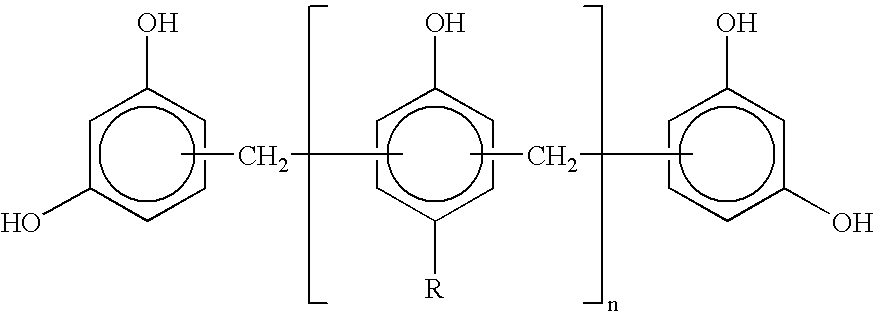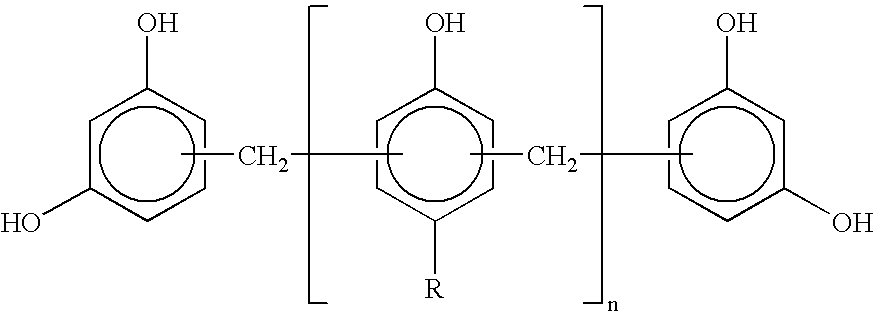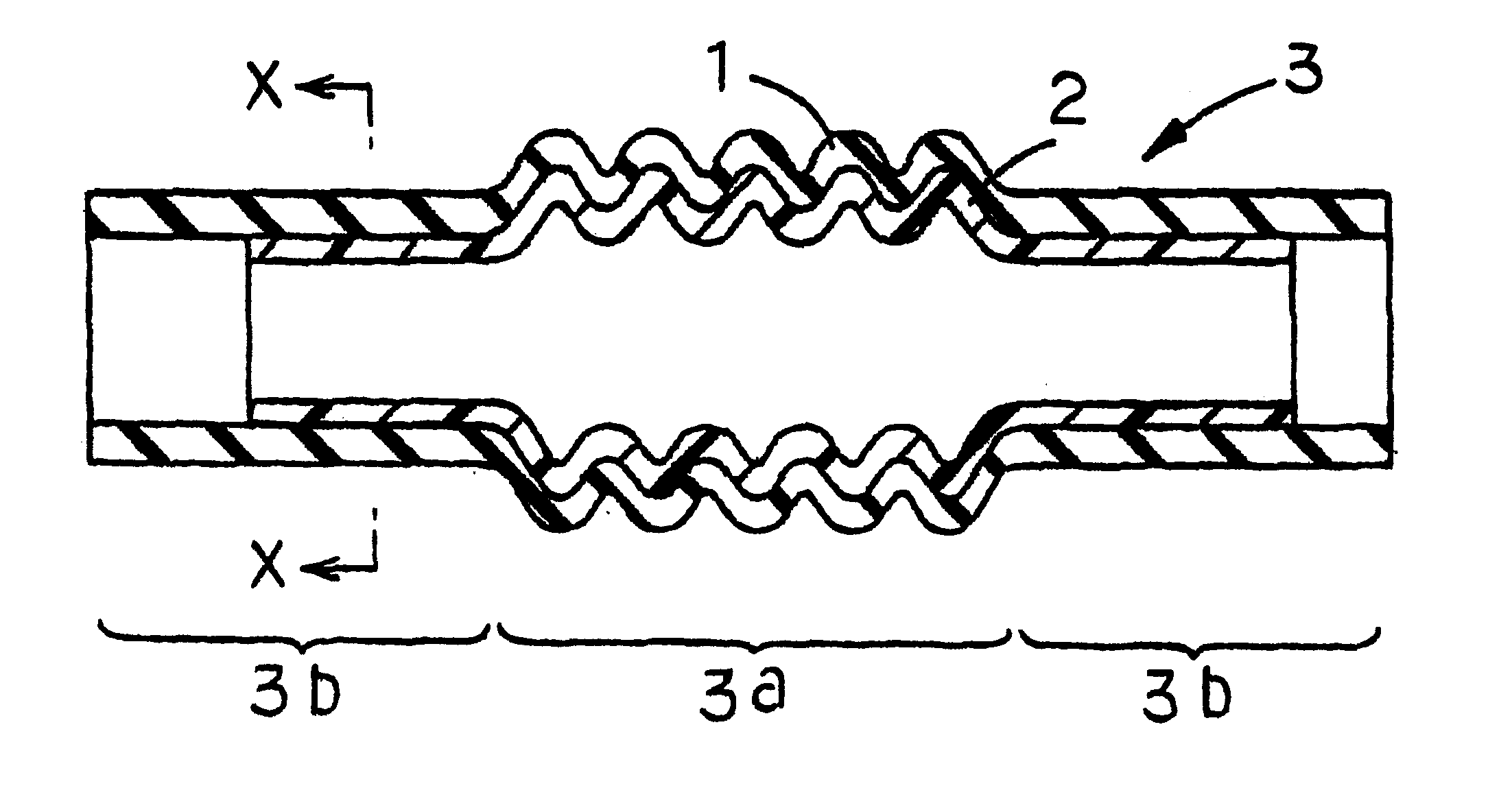Fuel hose
a technology of fuel hoses and hoses, which is applied in the direction of transportation and packaging, mechanical equipment, propulsion parts, etc., can solve the problems of poor flexibility and sealing properties of fluororesin, gasoline may be forced to remain in the gasoline tank for a long time to deteriorate gasoline, and the fuel hoses prepared only from nbr/pvc cannot cope fully with such fuel permeation regulation
- Summary
- Abstract
- Description
- Claims
- Application Information
AI Technical Summary
Benefits of technology
Problems solved by technology
Method used
Image
Examples
Embodiment Construction
, Examples 32 to 40, and Comparative Examples 1 and 4, NBR-PVC, epichlorohydrin rubber, CPE, and CSM having compositions as shown in the corresponding columns of Tables 8 to 13 were prepared. These rubber compositions were subjected to vulcanization molding by use of an injection molding machine at 160.degree. C. for five min. to prepare rubber tubes having a single-layer structure of a corrugated form, which had an inner diameter of 35 mm, a wall thickness of 4 mm, and a length of 200 mm.
Subsequently, the inner surfaces of the rubber tubes according to the aforesaid examples and comparative examples (excluding Examples 38 to 40 and Comparative Example 4) underwent the electrostatic powder coating of a fluororesin copolymer powder to form layers of 0.2 mm thickness although these were not described in the tables. The fluororesin copolymer was a VDF-CTFE copolymer having a VDF / CTFE molar ratio of 95 / 5. The electrostatic coating was carried out through corona discharge (minus charge) ...
PUM
 Login to View More
Login to View More Abstract
Description
Claims
Application Information
 Login to View More
Login to View More - R&D
- Intellectual Property
- Life Sciences
- Materials
- Tech Scout
- Unparalleled Data Quality
- Higher Quality Content
- 60% Fewer Hallucinations
Browse by: Latest US Patents, China's latest patents, Technical Efficacy Thesaurus, Application Domain, Technology Topic, Popular Technical Reports.
© 2025 PatSnap. All rights reserved.Legal|Privacy policy|Modern Slavery Act Transparency Statement|Sitemap|About US| Contact US: help@patsnap.com



